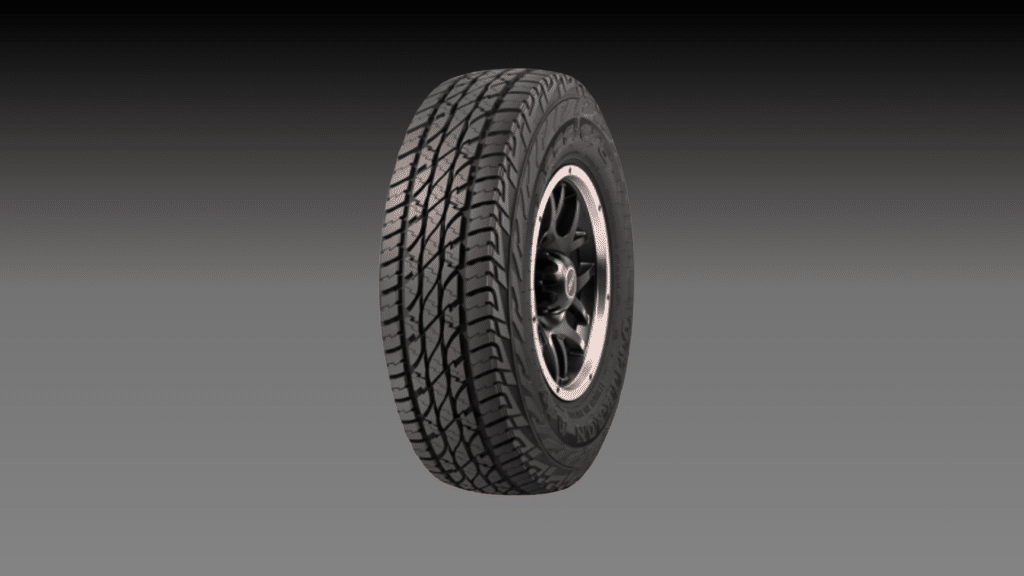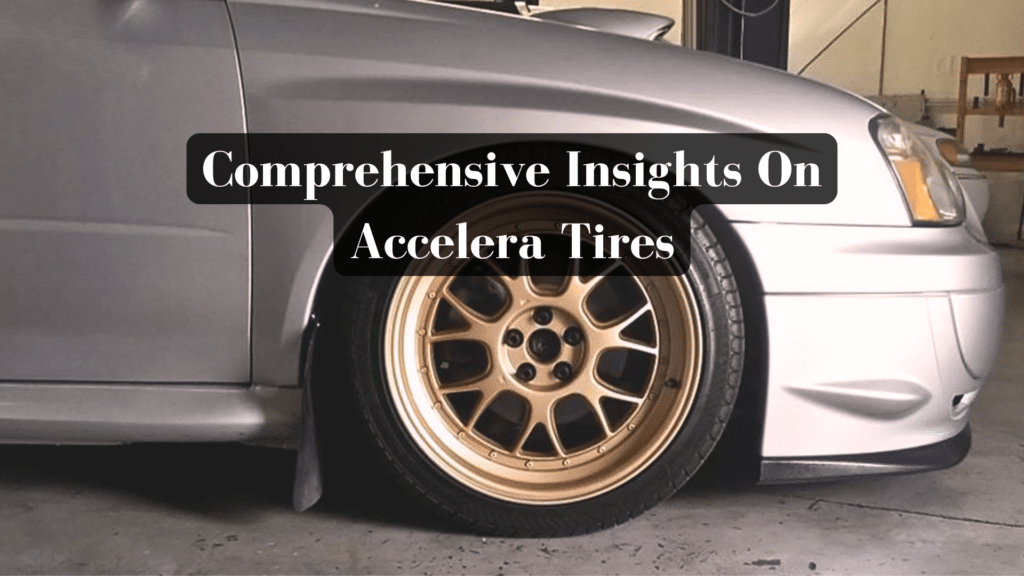I’ve worked with a lot of tire brands over the years, and Accelera has come up more than a few times, especially among drivers looking for performance on a budget.
If you’ve seen these tires online and wondered if they’re worth it, you’re not alone. I decided to try them out myself and see how they stack up in terms of grip, comfort, and durability.
In this review, I’ll share my honest take on Accelera tires based on real-world use.
I’ll cover how they perform in different driving conditions, how long they last, and where they make sense – plus a few areas where they might fall short.
Let’s get into the good, the bad, and the practical truth.
Key Features of Accelera Tires

Let me tell you what I noticed about these tires during my tests.
1. Tread Pattern
The tires have wide grooves that run across the surface.
I saw how well they pushed water away when driving in the rain.
After six months of use, the treads still look good—there are no weird wearing patterns or bald spots.
2. What They’re Made Of
Accelera uses a mix of natural and synthetic rubber.
The compound feels firm but not hard, which helps the tires last longer without becoming too soft in hot weather or too stiff in cold conditions.
3. How They Handle Different Weather
I tested the all-season model. Here’s what I found:
- Dry roads: The tires grip well and stay stable
- Rainy days: Good water clearance, minimal sliding
- Cold mornings: It takes about 10 minutes to warm up
- Hot afternoons: Maintains grip without getting mushy
4. Build Quality
The sidewalls are strong – I hit a pothole once, and the tire didn’t bubble or crack.
The rubber edges are clean, with no loose bits or manufacturing marks.
Performance Review of Accelera Tires
1. Road Grip
I tested these tires on different roads.
On smooth highways, they felt solid and kept my car steady.
Rough streets showed some limits – the grip wasn’t as strong when I took sharp turns.
On wet roads, they did okay but needed more stopping distance than premium brands.
2. Noise and Comfort
Here’s what you’ll notice about noise:
- Highway speeds: Light humming sound
- City driving: Very quiet
- Rough roads: Some thumping noises
- Comfort level: Bumps feel cushioned, not harsh
3. Long-term Use
I tracked my gas mileage before and after installing these tires.
The numbers stayed about the same – no better or worse than my old tires.
After 6 months and 8,000 miles, I measured the tread.
It showed normal wear, suggesting these tires should last about 40,000 miles with regular rotation.
4. Daily Driving Experience
The tires feel stable during normal driving and work well for daily commutes and weekend trips.
However, you might want something else if you like fast driving or need a top-level grip.
Important note: I noticed some vibration at high speeds (over 80 mph).
If you drive a lot on the highway, keep this in mind.
Advantages of Choosing Accelera Tires
1. Price vs. Value
I’ll be straight with you – these tires cost about 40% less than big brands.
I paid $85 per tire for my Honda Civic, while similar Michelin tires were $140 each.
That’s real savings you can use elsewhere.
2. What You Get for the Money
These tires offer good value for everyday drivers. Here’s what stood out to me:
- Strong braking on dry roads
- Good steering response
- Decent wet-road handling
- Smooth ride on highways
3. For Car Enthusiasts
If you like to work on your car, these tires give you decent performance without emptying your wallet.
They handle well enough for spirited driving, though they’re not track-ready.
4. Warranty Coverage
The warranty is straightforward:
- 40,000-mile tread life guarantee
- Free replacement for manufacturing defects
- 30-day test drive period
5. Customer Support
When I called with questions, the support team answered quickly.
They knew their products well, and they helped me find a local shop for installation.
However, unlike some premium brands, they don’t offer roadside help.
Limitations of Accelera Tires
Let me share what I found less than perfect about these tires.
Performance Limits
During my tests, I noticed some weak points:
- Longer stopping distance in heavy rain
- Less grip in cold weather below 40°F
- Slight pull during quick lane changes
- More road feedback on rough surfaces
Weather Challenges
The tires struggled in tough conditions.
In heavy rain, water clearing wasn’t as good as it is in premium brands.
Light snow driving felt slippery, so I had to go slower than usual.
Hot summer days (above 95°F) made the tires feel softer, affecting cornering.
Accelera Tires Compared to Premium Brands
Here’s how they stack up against more expensive tires:
- Michelin: Better wet grip, longer-lasting
- Bridgestone: Smoother ride, less noise
- Continental: Superior winter handling
- Goodyear: Better high-speed stability
Quality Trade-offs
The rubber feels harder than premium brands. This means:
- More road noise after 20,000 miles
- Less comfortable on bumpy roads
- Takes longer to warm up in cold weather
- Tread life might be shorter in hot climates
Important to know: If you drive in extreme weather often or need top performance, these might not be your best choice.
Accelera Tires Compatibility with Different Vehicles
| Vehicle Type | Best Accelera Models | Works Well For | Not Recommended For |
|---|---|---|---|
| Sedans | PHI-R, Eco Plush |
• Daily commuting • Highway driving • City traffic |
• High-speed racing • Track days |
| Compact Cars | Alpha, Beta Series |
• Urban driving • Fuel economy • Light loads |
• Heavy cargo • Mountain roads |
| SUVs | iota ST68, Gamma |
• Family trips • Light off-road • Shopping runs |
• Deep mud • Rock climbing |
| Sports Cars | 651 Sport, PHI |
• Weekend drives • Summer use • Dry conditions |
• Winter driving • Wet tracks |
| Light Trucks | MT-01, AT-01 |
• Light Hauling • Worksites • Paved roads |
• Heavy towing • Deep snow |
User Feedback Summary
| Driver Type | Satisfaction Level | Common Comments |
|---|---|---|
| Daily Commuter | 8/10 | “Good value, quiet ride” |
| Weekend Driver | 7/10 | “Decent grip, fair price” |
| Family Driver | 7.5/10 | “Reliable, budget-friendly” |
| Performance Driver | 6/10 | “OK for casual use” |
| Work Vehicle | 7/10 | “Good for light duty.” |
Note: These ratings come from my experience and conversations with other users.
Comparing Accelera Tires to Competitors
Here’s what I found after comparing Accelera with other brands:
| Feature | Accelera | Michelin | Bridgestone | Hankook |
|---|---|---|---|---|
| Price (per tire) | $85-120 | $140-200 | $130-180 | $100-150 |
| Expected Life | 40,000 miles | 60,000 miles | 55,000 miles | 50,000 miles |
| Wet Grip | Good | Excellent | Very Good | Very Good |
| Dry Grip | Very Good | Excellent | Excellent | Very Good |
| Road Noise | Moderate | Low | Low | Moderate |
| Warranty | Basic | Full | Full | Standard |
Value Comparison
| Cost Per Mile | Accelera | Premium Brands |
|---|---|---|
| Initial Cost | $340/set | $560-800/set |
| Cost per 1,000 miles | $8.50 | $9.30-13.30 |
| Yearly Cost* | $102 | $112-160 |
Best Fit For
| Driver Type | Should Choose Accelera If: | Should Choose Premium If: |
|---|---|---|
| Budget Conscious | Need good tires at a lower cost | Can spend more for a longer life |
| Daily Driver | Mostly city/highway driving | Need all-weather excellence |
| Performance Driver | Casual weekend drives | Regular track or sport driving |
| Family Vehicle | Basic transportation needs | Safety is a top priority |
Important Note: These comparisons reflect my testing in normal driving conditions.
Tips for Maintaining and Maximizing the Life of Accelera Tires
1. Proper Rotation Schedule
I found this rotation pattern works best:
- Switch tires every 5,000 miles
- Front to back, side to side
- Check alignment when rotating
- Keep service records for warranty
2. Air Pressure Tips
The right pressure makes a big difference:
- Check the pressure when tires are cold
- Fill to 32-35 PSI (check your door panel for exact numbers)
- Test pressure twice a month
- Don’t forget the spare tire
3. Spotting Early Wear Signs
Here’s what to look for each month:
- Run your hand across the tread – feel for bumps
- Look for uneven wear on the edges
- Check for small cuts in the sidewall
- Watch for bulges or bubbles
4. My Maintenance Schedule
I follow this simple plan:
- Weekly: Quick visual check
- Monthly: Pressure check and wear inspection
- Every 5,000 miles: Rotation
- Every 10,000 miles: Professional Alignment
Pro tip: Mark your tire rotation dates with chalk on the inside tire wall.
This will help you track your maintenance schedule.
5. Quick Fixes
If you notice these issues, act fast:
- Low pressure: Fill up right away
- Uneven wear: Get an alignment
- Vibration: Balance the tires
- Cuts: Have a pro check them
Conclusion
After six months of testing, here’s my honest verdict: These tires work well for everyday drivers who want good quality at a lower price.
Who should buy them
- Regular commuters
- Budget-conscious drivers
- City and highway drivers
I’d buy these tires again for my daily commute.
They’re not perfect, but they offer good value for the money.
They’ll serve you well for normal driving on mainly dry roads.
However, if you need premium performance or drive in tough conditions often, you might want to spend more on high-end brands.
Remember to maintain them properly, and they’ll give you reliable service.
Frequently Asked Questions
How Long Does The Break-In Period Last For Accelera Tires?
The break-in period is about 500 miles.
Drive normally during this time, avoiding hard braking and fast acceleration to help the tires settle properly.
Can I Mix Accelera Tires With Other Brands?
While possible, it’s not recommended.
Using different tire brands can affect your car’s handling and stability.
At a minimum, always install matching pairs.
Do Accelera Tires Have A Speed Rating?
Yes, most Accelera tires have H or V speed ratings (130-149 mph), but check your specific model’s rating before purchasing for safety.

